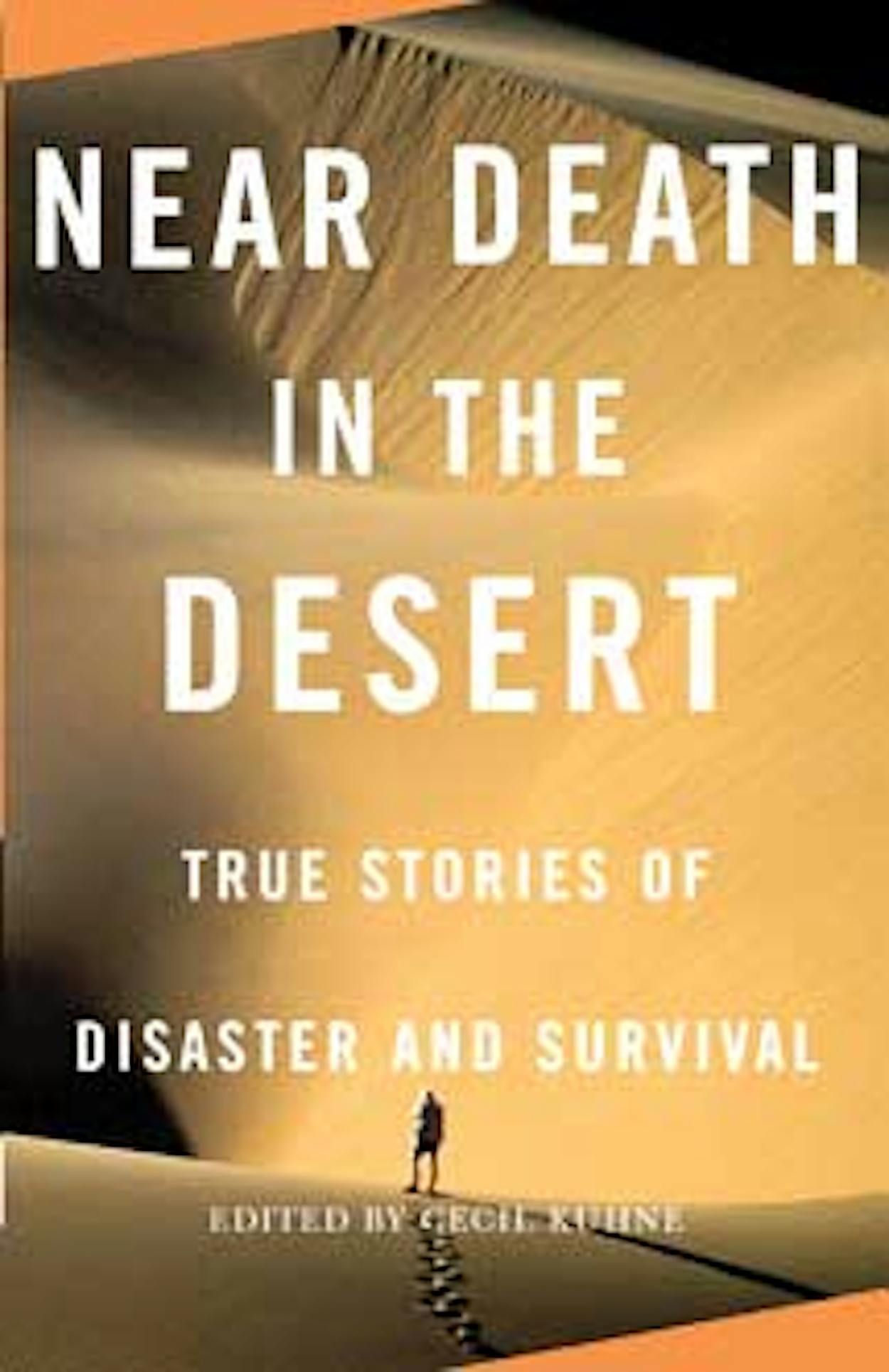Near Death in the Desert: True Stories of Disaster and Survival is the fourth and final book in a series of anthologies about high adventures that devolve into life-or-death situations (Near Death on the High Seas, Near Death in the Mountains, and Near Death in the Arctic). The editor, who is a commercial litigation attorney with Fulbright & Jaworski in Dallas, parlayed his college-days interest in adventure literature into his first two collections: The Armchair Paddler and On the Edge.
Did you make any surprising discoveries about deserts? Several. The world has unquestionably gotten smaller, but there are still deserts around the world that remain enticingly terra incognita. And there is, amazingly, a great deal of adventure going on around the world as we speak, and this includes deserts. Lastly, in spite of modern communication devices, an endeavor like walking across the Sahara is still a dangerous pursuit in which you can quickly lose your life. Nature is ultimately in control in these perilous places, and it will always be so.
Has the spirit of adventure diminished in modern times? The spirit of adventure is still very much with us—and one need not go far afield. New Hampshire’s Mount Washington, within one day’s drive of millions of people, has some of the most extreme and unpredictable weather on the continent. But because its altitude is only 6,300 feet, people often don’t adequately prepare for it. Well over a hundred deaths have occurred there.
Do you count yourself among the risk takers? No, my adventure stories pale in comparison. I’ve been a part of a few rafts that have overturned in white water, but my narrowest escapes have occurred in rush-hour traffic on my way to the airport.
Can you pick just one favorite story from Near Death in the Desert? If forced to choose, I think I would select Geoffrey Moorhouse’s piece from The Fearful Void, which is the account of his quest to cross the Sahara from the Atlantic to the Nile, a distance of 3,600 miles. That’s a long time to endure such pain, hunger, loneliness, and fear.
You include two desert stories set in North America. Am I the only person who forgets there are deserts in our backyard? We do tend to forget about the vast and magnificent deserts of the American Southwest. And one of the finest, to my mind, is in Texas: the Big Bend, which is a massive region, where a person can feel truly alone in those gorgeous canyons and mountains, with the sweeping sky overhead.
Are there more fatalities in desert adventures than in other types of high adventures? I don’t have any statistics, but the other adventure sports I profile—sailing on the high seas, mountaineering, and arctic exploration—are much less accessible than the desert, in that they require great expense or expertise to even gain access. So you undoubtedly have more individuals going to the desert without the proper preparation or adequate gear and water.
Do you suppose outdoors reality shows—Survivorman, Man vs. Wild—do more harm than good? Frankly, I think these survival shows on television are hideous. They are contrived and unrealistic, and they lead people to take risks they are completely unprepared for.
Are the books a nice counterbalance to your work at Fulbright & Jaworski? I’ve been at Fulbright for more than sixteen years, and I really enjoy the job and my colleagues. But yes, it is a terrific thing to rush home and work away on my books at night. I often wonder, what did I ever do to be so lucky? Vintage, $15.95
Buy Near Death in the Desert: True Stories of Disaster and Survival at BookPeople.com







